Ryan Hall's Blog, page 207
October 24, 2016
Wiley, Murage Triumph at Rock ‘n’ Roll Oasis Vancouver Half Marathon
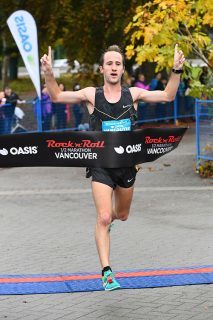
Turner Wiley broke the tape in a blazing 1:07:55, in his first half marathon win since college. Photo: Photorun.net
Vancouver’s motto is “By Sea, Land, and Air We Prosper”, and this Sunday, at the Rock ‘n’ Roll Oasis Vancouver Half Marathon, these words couldn’t have been truer. More than 10,000 runners from all over the globe toed the start line in both the half marathon distance and 10K for one of the most scenic courses in the Rock ‘n’ Roll Marathon Series. Though the weather forecast predicted rain, conditions held out which made the race even better and faster.
The fastest of all participants in the 13.1-mile event was Turner Wiley who broke the tape in a blazing one hour, seven minutes, and 55 seconds.
“The race was great. It was a new personal best for me and my first win since college,” said Wiley who attended Seattle Pacific University where he ran track and cross country. “I just wanted to run a fast time. I woke up and felt good. I’m used to the [Pacific] Northwest weather.”
Up to the 7K mark, there was a large pack in contention for the top prize, but Wiley decided to make his move. He relied on lessons learned from running the Rock ‘n’ Roll Seattle Half Marathon earlier this summer where he was more cautious. Wiley admitted that he had never been the leader in such a big race as Sunday’s where he had his own police escort and photographers snapping his picture.
PHOTOS: 2016 Rock ‘n’ Roll Oasis Half Marathon
“[The pack] was looking a little more tired, so I figured I’d give it go and pushed the pace,” he said. “It worked out for me. I’m used to the track where I’m just constantly going in circles. It was a great experience. People were cheering me on everywhere. The energy pushed me forward.”
Second and third place in Vancouver went to Roosevelt Cook (1:09:47) and Yon Yima (1:09:59) respectively.
Jane Murage, the winner of the Rock ‘n’ Roll Oasis Montreal Half Marathon last month was the women’s champion in 1:18:07.
“It was good,” she said after crossing the finish line in Devonian Park. “It was good weather for running. I felt strong.”
Murage ran the entire race unopposed, so the usual crowds and music that line the Rock ‘n’ Roll races were a huge help for her.
“There was no one to push me, but the city was wonderful,” she said. “It was great to see everyone cheering. The crowd pushed me and told me to move, and so I moved.”
Second place in the women’s half marathon was awarded to Kristen Rohde (1:19:46). Sarah West was good for third in 1:19:56.
Canadian pop singer Francesco Yates took to the stage at the Finish Line Festival in Devonian Park and serenaded the crowd with his hit song, “Sugar”—giving runners and their families something to dance to.
The 2017 Rock ‘n’ Roll Oasis Vancouver Half Marathon & Cunningham Seawall 10K is scheduled for the weekend of Oct. 21-22. Runners can secure the lowest price of the year during a special pre-sale registration through next Sunday, Oct. 30. For complete results, photos or 2017 pre-sale registration, visit runrocknroll.com/vancouver.
PHOTOS: 46th Annual Cunnigham Seawall 10K
The post Wiley, Murage Triumph at Rock ‘n’ Roll Oasis Vancouver Half Marathon appeared first on Competitor.com.
October 23, 2016
Photos: Runners Rock Rock ‘n’ Roll Oasis Vancouver Half Marathon

Over 10,000 runners from around the world toed the start line Sunday morning at the Rock ‘n’ Roll Oasis Half Marathon on one of the most scenic race courses in the world. Though the weather forecast predicted rain, conditions held out which made for perfect autumn running weather. The fastest of all participants in the 13.1-mile event was Turner Wiley who broke the tape in a blazing one hour, seven minutes, and 55 seconds. Jane Murage, the winner of the Rock ‘n’ Roll Oasis Montreal Half Marathon last month was the women’s champion in 1:18:07. (credit: Bruce Wodder)
Photo Gallery
1 of {count}
Back to Start
View Larger Image
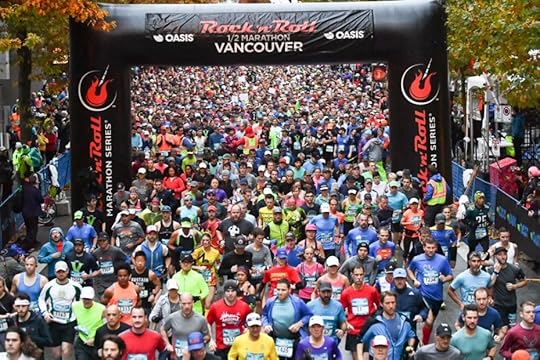
Credit: Bruce Wodder/PhotoRun.net
View Larger Image
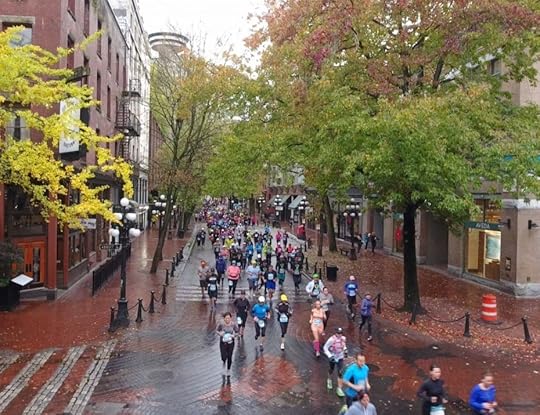
Credit: Bruce Wodder/PhotoRun.net
View Larger Image

Credit: Bruce Wodder/PhotoRun.net
View Larger Image
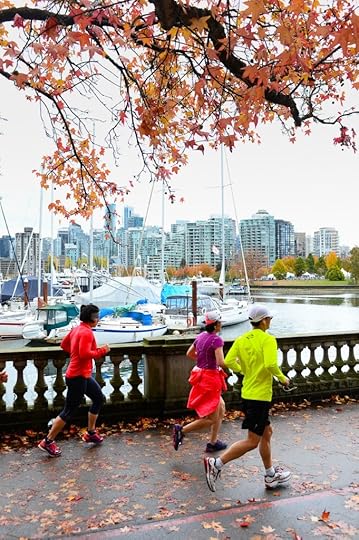
Credit: Bruce Wodder/PhotoRun.net
View Larger Image

Credit: Bruce Wodder/PhotoRun.net
View Larger Image
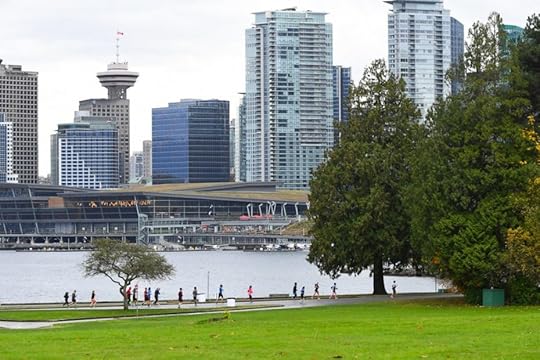
Credit: Bruce Wodder/PhotoRun.net
View Larger Image
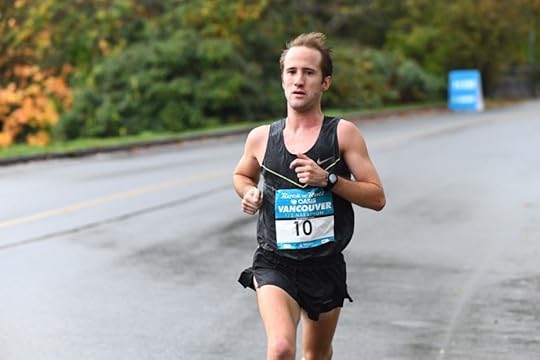
Credit: Bruce Wodder/PhotoRun.net
View Larger Image

Credit: Bruce Wodder/PhotoRun.net
View Larger Image
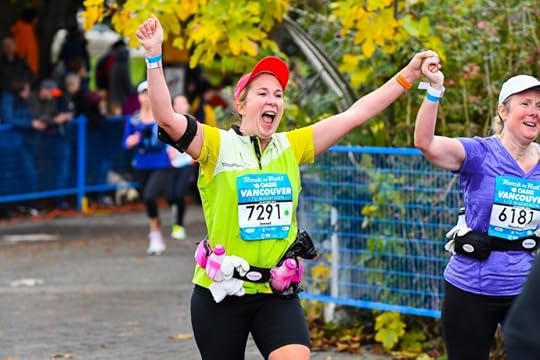
Credit: Bruce Wodder/PhotoRun.net
View Larger Image

Credit: Bruce Wodder/PhotoRun.net
View Larger Image
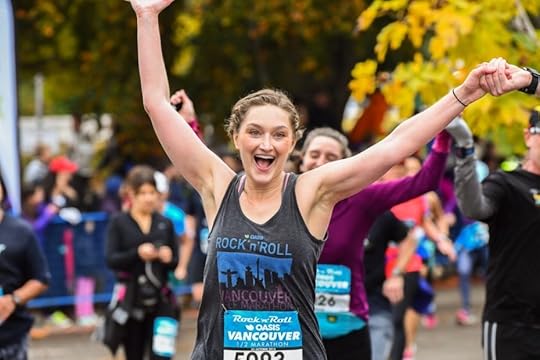
Credit: Bruce Wodder/PhotoRun.net
Related Galleries
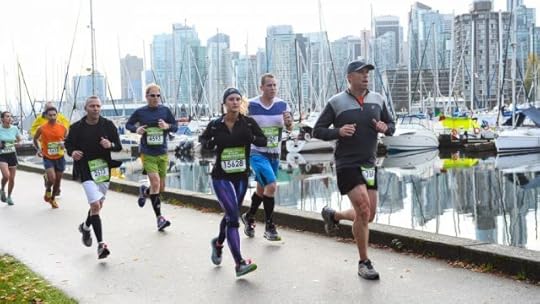
Photos: 46th Annual Cunningham Seawall 10K

Photos: Rock ‘n’ Roll St. Louis Half Marathon & 10K
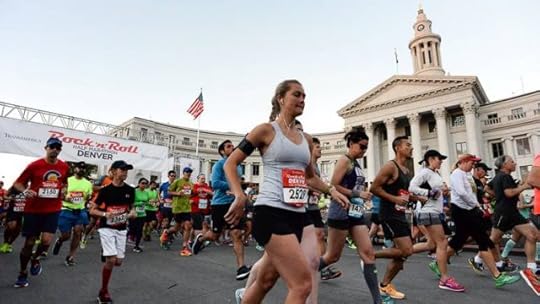
Photos: Transamerica Rock ‘n’ Roll Denver Half Marathon & 10K
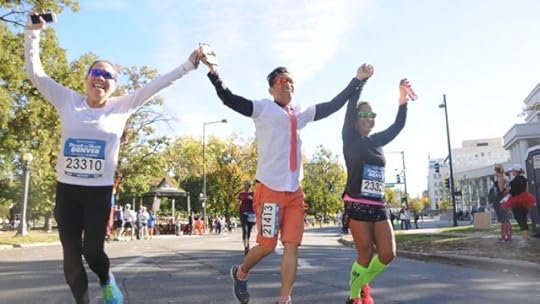
Photos: Transamerica Rock ‘n’ Roll Denver 5K

More Galleries
The post Photos: Runners Rock Rock ‘n’ Roll Oasis Vancouver Half Marathon appeared first on Competitor.com.
October 22, 2016
Photos: 46th Annual Cunningham Seawall 10K
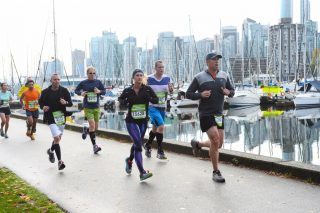
The Rock ‘n’ Roll Oasis Vancouver Half Marathon kicked off Saturday morning with the 46th annual Cunningham Seawall 10k, which is oldest race in British Columbia. Vancouver locals Geoffery Martinson and Rachel Cliff were victorious breaking the tape in 30:22 and 35:18, respectively. More than 3,000 runners experienced a spectacular waterfront course on a perfect Autumn morning. (Credit Bruce Wodder/PhotoRun.net)
Photo Gallery
1 of {count}
Back to Start
View Larger Image
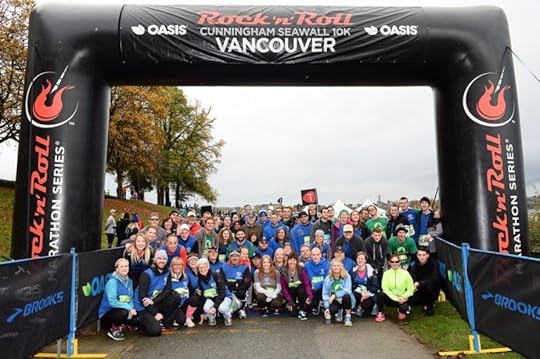
Credit Bruce Wodder/PhotoRun.net
View Larger Image

Credit Bruce Wodder/PhotoRun.net
View Larger Image
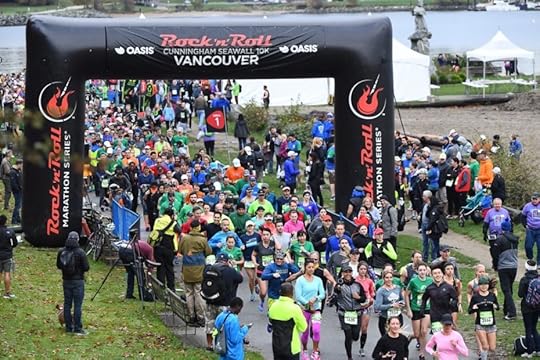
Credit Bruce Wodder/PhotoRun.net
View Larger Image
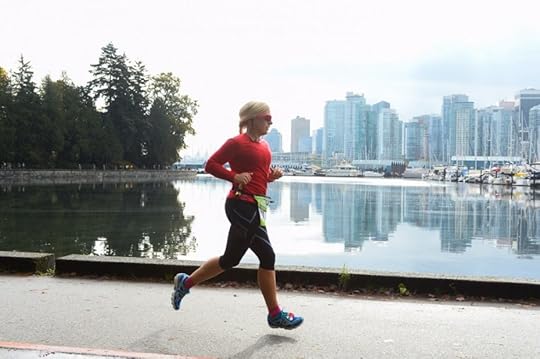
Credit Bruce Wodder/PhotoRun.net
View Larger Image
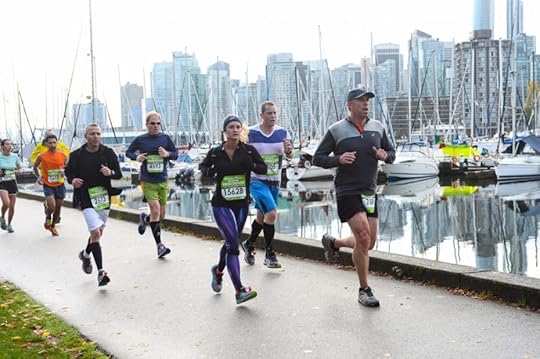
Credit Bruce Wodder/PhotoRun.net
View Larger Image

Credit Bruce Wodder/PhotoRun.net
View Larger Image

Credit Bruce Wodder/PhotoRun.net
View Larger Image
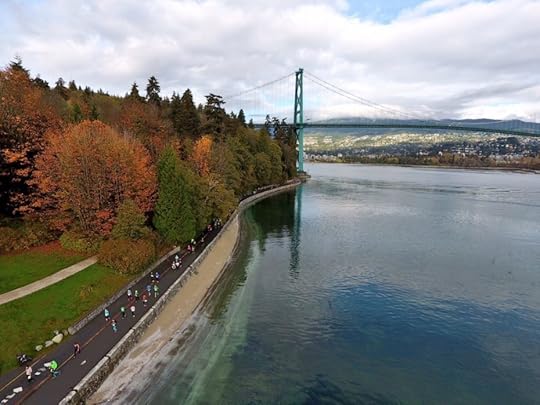
Credit Bruce Wodder/PhotoRun.net
View Larger Image
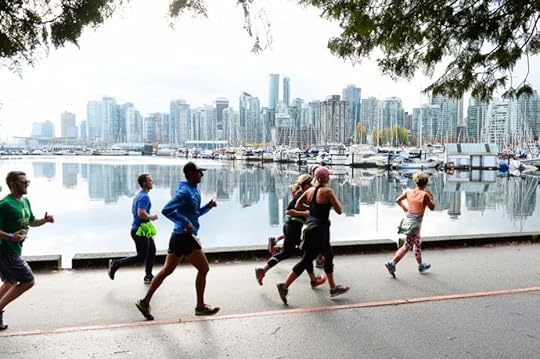
Credit Bruce Wodder/PhotoRun.net
View Larger Image

Credit Bruce Wodder/PhotoRun.net
View Larger Image
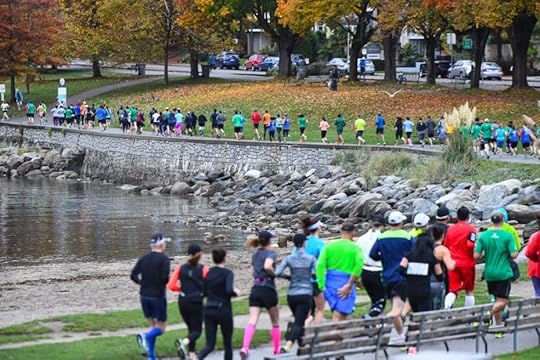
Credit Bruce Wodder/PhotoRun.net
View Larger Image

Credit Bruce Wodder/PhotoRun.net
View Larger Image
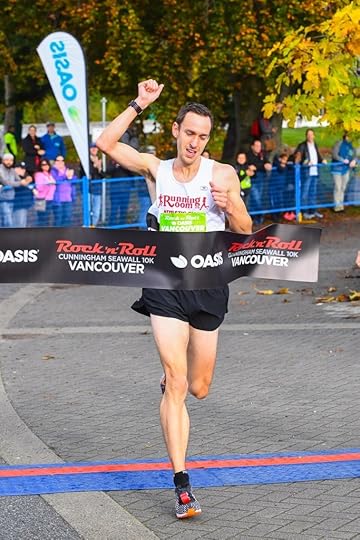
Credit Bruce Wodder/PhotoRun.net
View Larger Image
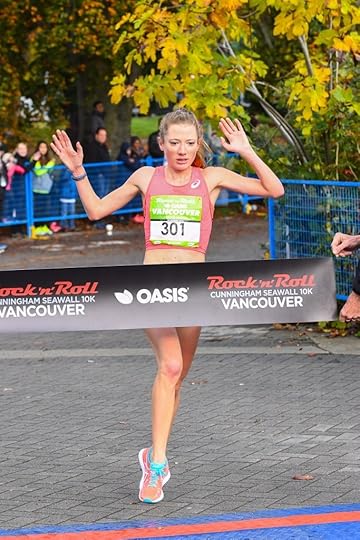
Credit Bruce Wodder/PhotoRun.net
View Larger Image
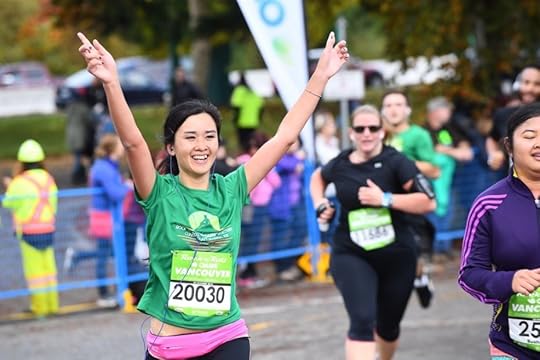
Credit Bruce Wodder/PhotoRun.net
View Larger Image

Credit Bruce Wodder/PhotoRun.net
View Larger Image
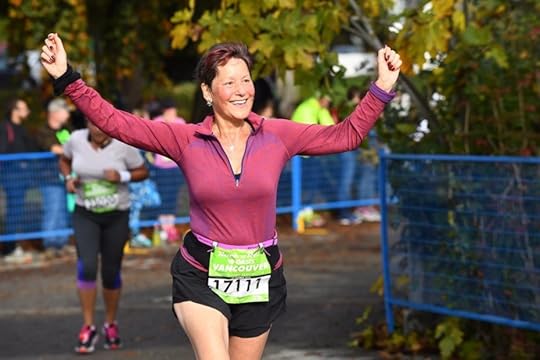
Credit Bruce Wodder/PhotoRun.net
View Larger Image

Credit Bruce Wodder/PhotoRun.net
View Larger Image

Credit Bruce Wodder/PhotoRun.net
Related Galleries

Photos: Rock ‘n’ Roll St. Louis Half Marathon & 10K

Photos: Transamerica Rock ‘n’ Roll Denver Half Marathon & 10K

Photos: Transamerica Rock ‘n’ Roll Denver 5K

Photos: Rock ’n’ Roll St. Louis Kicked off Race Weekend with Saturday 5K

More Galleries
The post Photos: 46th Annual Cunningham Seawall 10K appeared first on Competitor.com.
October 21, 2016
2016 New York City Marathon Special Edition Shoes
“Start spreading the news, I’m leaving today … I want to be a part of it, New York, New York …
These vagabond shoes, are longing to stray … Right through the very heart of it, New York, New York … “
With a cue from Frank Sinatra, running shoe brands apparently want to be a part of the New York City Marathon buzz with some special-edition vagabond shoes. Although ASICS is the only official footwear and apparel brand, numerous shoe companies (including ASICS) have created New York-themed models in advance of this year’s New York City Marathon on Nov. 6. (Most will be sold in limited quantities at the New York City Marathon race expo, select New York City retail shops and each brand’s online channels.
Photo Gallery
1 of {count}
Back to Start
View Larger Image
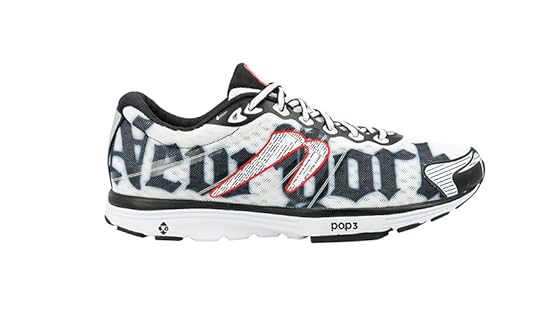
Newton New York City Special Edition Aha, $125
With a bold font treatment, there's no question that this shoe represents the Big Apple.
View Larger Image
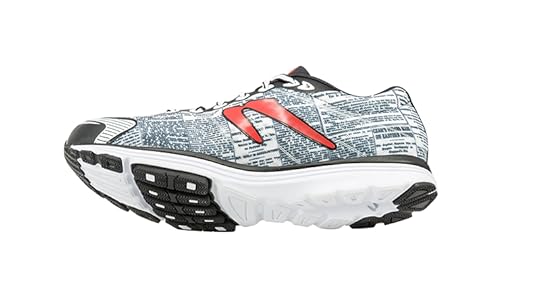
Newton New York City Special Edition Aha, $125
The lateral view of the Newton shoe has a red logo and a newsprint theme.
View Larger Image
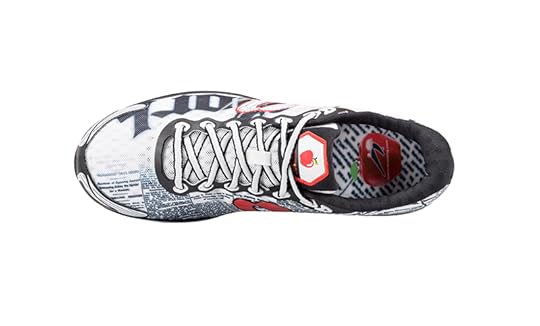
Newton New York City Special Edition Aha, $125
The Newton shoe also has a Big Apple theme on the tongue and the sockliner.
View Larger Image
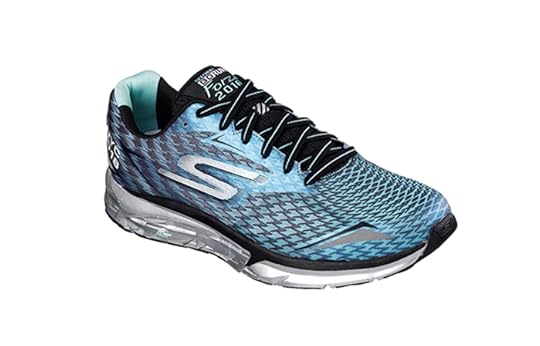
Skechers Peformance GOrun Forza – NYC 2016, $125
The Skechers Performance NYC shoes have a shimmer that was inspired by the every-present city lights.
View Larger Image
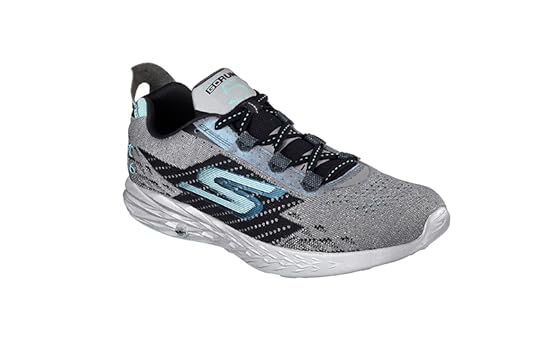
Skechers Performance GOrun 5 – NYC 2016, $110
This special edition of the GOrun 5 channels the blues and grays found throughout the city.
View Larger Image

ASICS Gel-Kayano 23 NYC, $170
This legacy shoe features postmarks and badges of iconic New York landmarks.
View Larger Image
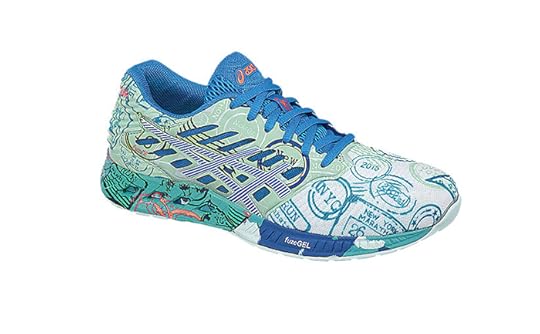
ASICS FuzeX NYC, $120
This new model features postmarks and badges of iconic New York landmarks.
View Larger Image
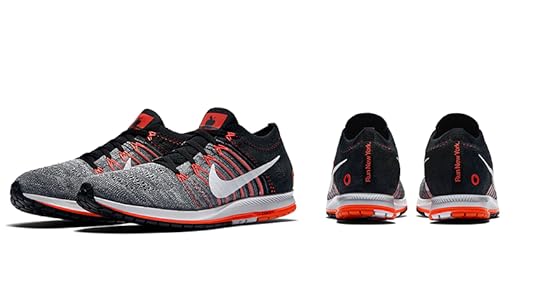
Nike Flyknit Streak LE New York 2016, $160
The Nike Flyknit Streak shoes are adorned with red apples and "Run NYC" on the sockliner and exterior heel.
View Larger Image
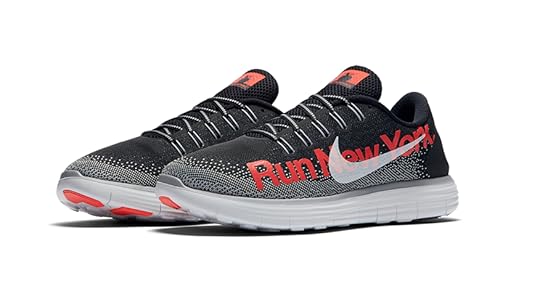
Nike Free RN Distance NYC 2016, $120
This shoe screams "Run New York" across both sides and has miniature Big Apple icons on the top of the tongue and the sockliner.
View Larger Image
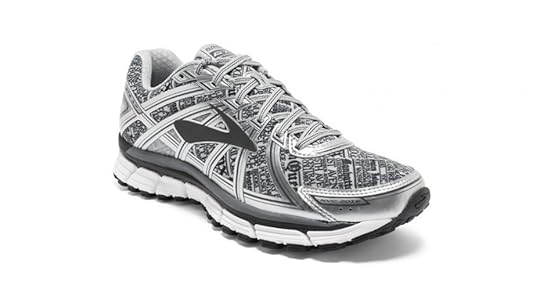
Brooks Gray Lady Adrenaline GTS 17, $130
The shoe is inspired by NYC newspapers, newsprint and classic crossword puzzles and it captures the true essence of New York and its cultural landmarks and boroughs.
View Larger Image

Brooks Gray Lady Adrenaline GTS 17, $130
The footbeds of the Brooks Gray Lady are reproductions of classic newspaper crossword puzzles.
View Larger Image

Saucony NYC Kinvara 7, $120
The popular Kinvara 7 has been decked out with a data-influenced grid pattern inspired by Wall Street.
View Larger Image
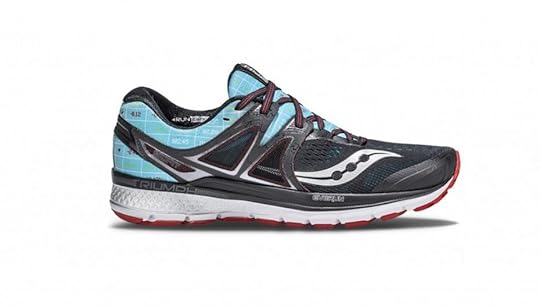
Saucony NYC Triumph ISO 3 NYC, $160
The newest edition of the Triumph ISO has been tweaked a bit and this one sports a data-influenced grid pattern inspired by Wall Street.
View Larger Image
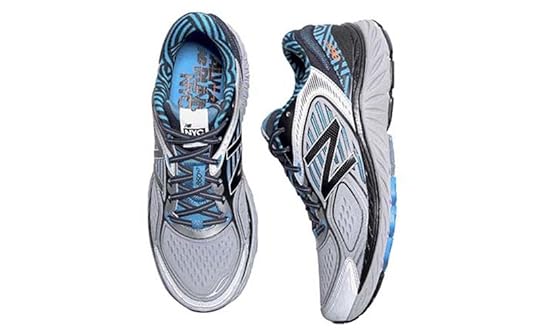
New Balance 860 v7 NYC, $135
The graphic on the outsole and collar liner are inspired by the high-level view of the city, the graphic nature of the roads and transportation; another nod to the constant movement within the city. There are a lot of bright reflective elements to provide safety features when running at night because NYC is always running.
View Larger Image
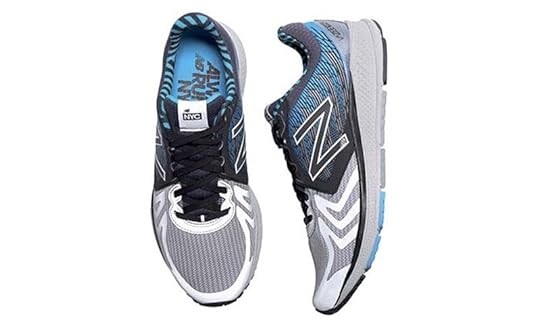
New Balance Vazee Pace 2 NYC, $120
The inspiration for this shoe plays off the age-old “city that never sleeps” theme. The words "Always Running NYC" are printed on the footbed.
View Larger Image

Altra Torin NYC, $130
This shoe highlights the graffiti art and the concrete jungle of urban New York City.

More Galleries
The post 2016 New York City Marathon Special Edition Shoes appeared first on Competitor.com.
7 Tips for Starting a Successful Running Club

The North FoCo Run Club likes to rehydrate together after a run. Photo: John Garvey
If you’re passionate about something that’s outside the scope of your work and family life, a great way to channel that passion is to start a club. I founded a running club during a time in my life where I was dissatisfied with my career and rather unsure of myself. Now, well into its third year, it has been one of my most affirming and fun life experiences.
If you have a vision and any kind of organizational ability, you can start a great club that may even become the cornerstone of your social life! Here are a few tips to help you on your way.
RELATED: How to Start Your Own Unique Run Crew
Disclosure: Everything looks easier from the outside
A lot of work goes into soliciting sponsors, promotion, and organizing events. For me the biggest stressor was the emotional stress of getting started. “Will anyone show up or will I end up like the new kid eating alone in the cafeteria?” Be prepared for early disappointments, but also be confident that with perseverance a well-conceived idea will eventually succeed.
A club isn’t a business. It isn’t going to make or break you, but if your concept is something you’re passionate about it still becomes your baby. If nobody shows up, it’s kind of like nobody thinks your baby is cute. If you don’t want that to happen you have to go out and pound the pavement.
Don’t try to be another version of an existing club
If you can’t think of something really unique that’s lacking in your community, just become involved with another organization. It’s still rewarding to be in a non-leadership role in a great club, and who knows?—in a couple years you may find yourself living in another town that needs something exactly like it.
Consider what others are doing, what you want to do, and how they differ.
The emphasis of each club varies widely, and that’s the way it should be. Try to beat others at their own game and you’re likely to lose. Figure out what you can be the best at and do it. Then decide what else needs to get done, do it adequately, and ignore the other things. Clubs are meant to have very different appeals and draw different types of people.
That leads us to the nuts and bolts of actually getting started and managing a club…
Selecting and communicating value to sponsors
Whether you’re after funding, exclusive discounts, or other perks, you need your proposals to be strongly tailored to each establishment you approach. Ask yourself whether you’d be a good culture fit. Does the venue host community events? Are they involved with local nonprofits? Are they already hosting other clubs—and if so, would that make them more or less likely to want a bunch of sweaty runners milling around?
Whatever you’re asking of a business, think of how you can offer something of comparable value in return. Increased revenues and brand recognition, promotions on social media, featuring a business’s logo on your club’s T-shirts, and other forms of acknowledgement are all fairly tangible things you might offer.
Don’t use the scattergun approach
Tap rooms, running stores and restaurants receive sponsorship requests a lot more often than you might think. Only by having highly-individualized proposals that show you’re familiar with the establishment will you get anyone’s attention—and sometimes not even then. Approaching few sponsors in a conscientious way will help you get the needed support and avoid a bunch of unnecessary letter writing. And P.S. Nobody likes form letters.
Funding and perks
Few running stores and restaurants have big philanthropy budgets burning a hole in their pockets. In contrast, large health clubs, breweries, and food brands may have expendable cash. Don’t ask too much of mom and pop establishments, but also don’t be afraid to ask larger businesses to cover all your costs. If you’re smart you can attract a decent following without spending too much, but consider Meetup.com fees, printing and design expenses for fliers, Facebook/social media promos, and T-shirts (which most self-respecting clubs eventually want). If you ask someone for a pittance that’s what you’ll get, and you may have to cover more of your club’s costs than you’d hoped to. In sum, don’t be greedy, but do be realistic.
Promotion
Meetup.com. It’s a no-brainer. Have a Meetup page, one additional social media site, and maybe do some flyering. I started out with a website through GoDaddy that didn’t cost much. While this helped lend me credibility soliciting sponsors and raffle donations, it wasn’t necessary and I later defaulted to Facebook.
Posters and flyers are a lot of extra work, but not necessarily a bad idea. First, the actual act of flyering presents extra opportunities to generate word of mouth, and second, the extra few people you draw in could be really high-quality. Just know that online promotion is easier and more effective overall.
Other considerations: Nuts and Bolts
A few final considerations that don’t merit their own section in this article include whether you want to have the following:
Membership dues
Rotating venues or one venue
Leadership team
Website
Use of waivers (My opinion? It’s being paranoid.)
Raffles
As you may have gathered, my club isn’t all about running. It’s about community engagement, supporting local businesses, fun and friendship. There’s nothing wrong with a gritty club that’s all about training, but most have a unique culture and unspoken values that go beyond the scope of running. Part of the beauty of most community organizations is what they do outside of their core purposes. Give that some thought. Just as important, have fun!
John Garvey is the founder and president of North FoCo Running Club and community Outreach Coordinator for Altitude Running.
FREE SUBSCRIPTION: Sign Up for Competitor’s Free Monthly Digital Magazine
The post 7 Tips for Starting a Successful Running Club appeared first on Competitor.com.
A Breakdown of Patrick Lange’s Ironman World Championships Running Record
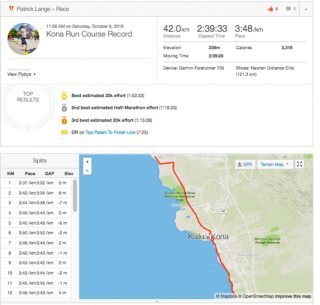
Patrick Lange's performance data for his 2:39 marathon run during the 2016 Ironman World Championships is pretty impressive. Photo: Courtesy of Strava
The triathlon world is still in amazement of the 26.2-mile run split Patrick Lange cranked out on Oct. 8 at the Ironman World Championships in Hawaii—and with good reason. In his first ever Ironman World Championships race in Kona, the 30-year-old German triathlete ran a record-breaking 2:39:45 marathon—immediately after swimming 2.4 miles in the ocean and cycling 112 miles on the hot and breezy roads of northwest side of the Big Island of Hawaii. That means he averaged about 6:05 per mile for 26.2 miles after 5 and 1/2 hours of swimming and biking.
After a strong swim (2.4 miles in 48:57 was among the best of the day), Lange was set back by a drafting penalty of 5 minutes on the bike section of the race (along with other top competitors Frederik Van Lierde, Andreas Raelert and Brent McMahon), ultimately being taken out of contention on the bike. (He finished with a 4:37:49 split for the 112-mile bike ride. (With the penalty included, that’s an average of about 24 miles per hour … but it was roughly 4 to 14 minutes slower than the top 10 competitor splits.)
However, he found his stride back and re-wrote triathlon history by setting a course record on the run, moving up from 23rd place coming off the bike to third overall in 8:11:14 by the finish of the run. (Lange broke the 27-year-old run course record of 2:40:04 that Mark Allen set in 1989.) While many say the Ironman race is “all about the bike,” Lange proved that a fast runner can make a huge impact. Fellow German Jan Frodeno, who repeated his championship victory at the Ironman World Championships with an 8:06:30 overall effort, closed the race with a 2:45:34 marathon run split. Second-place finisher Sebastian Kienle, also a German, finished in 8:10:02 overall after a 2:49:03 run split.
Lange was wearing a pair of 7.6-ounce Newton Distance Elite shoes during his record run. According to Strava, he had the best estimated half-marathon effort (1:19:23) during the first half of the course, but ran the race with near-equal splits.
RELATED: 2016 Ironman World Championships Running Shoe Count
Lange uploaded his performance data from Ironman on Strava.
Here are some of the other highlights:
Distance: 42K or 26.2 miles
Moving time: 2:39:28 (Note: Lange’s official split for the run was 2:39:45.)
Elapsed time: 2:39:33
Pace: 3:48/K or 6:05/mile
Elevation Change: 238m or 781 feet
Calories Burned: 3,318
RELATED: 2016 Ironman World Championships Race Report
The post A Breakdown of Patrick Lange’s Ironman World Championships Running Record appeared first on Competitor.com.
October 20, 2016
Video: Cancer Survivor Nicky Spinks Sets Amazing Trail Running Record in England
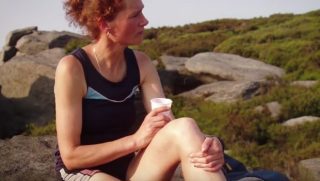
Nicky Spinks is a survivor and an inspiration. The 49-year-old farmer from Yorkshire, England, made fell running history last spring by becoming the fastest person to run a Double Bob Graham Round. What is a Double Bob Graham Round? Starting and finishing in the town of Keswick, a standard Bob Graham Round involves a 66-mile circuit of 42 summits in the Lake District with 27,000 feet of elevation gain, all to be completed in less than 24 hours. Nicky did it all twice—she took over an hour off the previous record set in 1979 by Roger Baumeister, who was there in person to support Nicky during her attempt. Now the story of Nicky’s incredible life and record-breaking success is being told in a new film called “Run Forever.” The film will premiere at the Nov. 17-20 Kendal Mountain Festival in the UK. In the meantime you can check out the inspiring trailer above.
RELATED: Chasing Jim Walmsley on his Record Grand Canyon Run
The post Video: Cancer Survivor Nicky Spinks Sets Amazing Trail Running Record in England appeared first on Competitor.com.
How Trail Running Helped This Runner Explore a World Outside
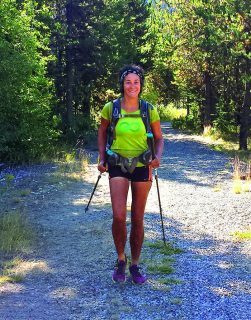
On Aug. 18, her 32nd birthday, Shadia Nagati completed the Pacific Crest Trail (PCT) from Mexico to Canada by fastpacking, a blend of light running and backpacking, over four months—a huge achievement for anyone, but especially for someone who had never done much physical activity until just a few years ago. Someone who, at one point, had lost the will to do anything.
“Growing up, I was confined inside a lot,” Nagati says of her childhood in Wichita, Kan. “I had really restrictive parents. They were distrusting of everyone and painted a picture of extreme fear of the outside world. We didn’t do things that normal kids did. We didn’t go camping. We didn’t go on adventures. I wasn’t allowed to play sports even though I wanted to.”
After graduating from high school, she attended college for a year, but dropped out after “a really rough time with depression,” she says. She moved to Portland, Ore., where she worked as a bartender and hit the party scene hard. “I went through heavy drug and alcohol use,” she says. “It got really dark. I was suicidal.”
Things started to change, however, when in 2012 she met Michele Merchant, a chef and an avid hiker who also had a substance-abuse background. Merchant, who has been sober for 33 years, nurtured Nagati and helped her realize that she didn’t have to self-destruct.
Nagati says she’ll never forget the first time Merchant took her hiking on a crisp fall day in Portland’s Forest Park, a mecca for trail runners, when a runner came flying down the trail. Nagati was inspired by how free he seemed—so she decided to try running.
RELATED: How Running Changed These Four People’s Lives
After training for and completing a 5K on the road, she went on her first group trail run in Forest Park with Wy’east Wolfpack, a local running and fitness training company co-founded by ultrarunner Willie McBride, whom Nagati soon hired as her coach.
“At that time, Shadia didn’t see herself as an athlete,” McBride says. “She wasn’t confident in her running abilities because she was just getting into it.”
But Nagati was sure about the trail and the running group. “I didn’t understand that feeling of belonging until I found that tribe of people and that place,” she says.
During the next several years while training with McBride, she ran a trail half marathon, a few 50Ks, a 50-miler, the 42-mile Grand Canyon Rim-to-Rim-to-Rim, and various sections of the PCT before tackling the whole thing.
On the PCT, she logged 20 to 45 miles a day, depending on the terrain, while also taking rest days. She kept her pack under 20 pounds and wore trail running shoes most of the time.
RELATED: Running 453 Miles of the Pacific Crest Trail in Record Time
“I’ve learned to live minimally and simply, and I want to apply that to my life,” Nagati says. “I feel like my brain has changed the way it processes information. I feel much more present and in tune with everything.”
She’s also learned that she can depend on herself, even in the most difficult situations. While attempting to cross a rushing stream in Yosemite, the current pulled her under and pummeled her into a rock, which sliced her knee open to the bone. But she stayed calm, patched herself up and kept on going.
“Even when I was having a hard time, I would tell myself that each step was a reward,” she says.
Her next step: college. She plans to return this winter to pursue a degree in environmental studies.
The post How Trail Running Helped This Runner Explore a World Outside appeared first on Competitor.com.
Workout of the Week: Out-and-Backs

Photo: Shutterstock.com
Excerpted with permission from One Hour Workouts: 50 Swim, Bike & Run Workouts for Busy Athletes by Scott Molina, Mark Newton and Michael Jacques (VeloPress, 2010).
Out-and-back sessions are very easy and can be done anywhere. Out-and-backs are a type of progression run in which your effort and pace increases during the second half of the run. The goal is simply to negative-split the session, running out to a point and returning at a faster pace back to the original point. Ideally, you’ll be able to return 1-2 minutes faster than the time it took on the outbound part of the run.
When performed with a negative split, these sessions teach great pacing and tempo endurance to help you finish fast. They’ll help you develop the tools to run all the way to the line.
Time/Distance
Description
10 min.
Easy running (Zone 1)
20-40 min.
Out-and-back intervals (Zone 3)
(The main set can also be repeated twice, such as 2 × 20 min.)
10 min.
Easy running (Zone 2)
Sample Workouts
Time
Description
20 min.
11 min. out, 9 min. back
30 min.
16 min. out, 14 min. back
40 min.
21 min., 19 min. back
Initially, you’ll find that your concentration and attention to holding constant leg speed and effort is significantly challenged. Often it will feel monotonous and like a countdown. As you perform the session more frequently, your focus on the task will improve, and the session will feel easier. Over time, you’ll often find you start the countdown much later into the session, but look forward to it.
RELATED: Out-and-Back … Faster!
The post Workout of the Week: Out-and-Backs appeared first on Competitor.com.
16 Weeks to Your First 50K

Photo: Istockphoto.com
Reproduced with permission from Hal Koerner’s Field Guild to Ultrarunning (VeloPress, 2014).
Just like you, I love to run. For a beginner, it sometimes seems as if there can never be too much of a good thing. Motivation and excitement mix and become a seductive elixir from which big gains evolve. I would caution you to take it slowly, however. Doing so helps you avoid injury, overtraining and burnout. Now, I know that the ultra-distance running attracts a certain personality to its door, and there are plenty of runs in here to take advantage of that zeal, but please heed the progressions in this plan if you are new to the distance. I promise it will help you keep on enjoying ultras for a long time.
RELATED: Ultrarunning 101: How to Get Started
Intensity Workouts
This plan will help you achieve initial success for the common 50K race distance (aka 31 miles). The mileage is easy enough to follow, but sometimes that isn’t enough to maintain a progressive build. Training is more than just putting in more and more miles, although that is certainly key. There also needs to be some intensity built into your training program. I am a firm believer that intense workouts must be separated by at least 10 to 12 days to allow for recovery and proper performance when called upon. With that in mind, I have suggested days on which to add one of the intensity workouts to your daily mileage. You will notice that these workouts generally follow a two-week cycle, to allow for other moderate training exercises that will exist within the plan and bring diversity.
Fartleks
Fartleks (“speed play” in Swedish) are designed to provide some change of pace for the legs, since most of the running at this time is at an easy pace. For fartlek training, run a one-minute surge every six or seven minutes for the entirety of the run. This surge is not terribly hard, perhaps 15 to 20 seconds per mile faster than your normal long-run pace. At the end of the surge, simply return to your relaxed rhythm. If you are having a hard time returning to your normal long-run pace, lower the speed of your surges.
RELATED: Effort-Based Endurance Fartleks
Hill Repeats
Hill repeats are another tool for building strength, and they also give you greater confidence come race day. Locate a consistent grade on which to perform your repeats. The key is to do a sustainable effort for 90 seconds followed by a two- to three-minute cool-down, and to repeat this 10 times. Ideally, you would work this exercise into the designated run, perhaps running to your preferred stretch of climb as a warm-up and back again for the cool-down.
RELATED: Improve Your Running Form with Short Hill Sprints
Tempo Runs
Tempo runs are inserted during peak training weeks to enhance the feel of a race-day effort and to make your body more efficient for the duration of the event. The key is to work on your rhythm and tempo for an hour at a comfortably hard pace.
RELATED: Sage Canaday’s 20-Minute Tempo Run
Training Races
Although this plan does not specifically schedule preparatory training races, I urge you to factor these in. Putting yourself in race situations is a smart, useful and confidence-building strategy. Pushing yourself against competition isn’t something you can replicate with ease in your day-to day training. I find the pull of a race very motivating, and it helps to harden my legs for the big day. It always gives me leeway to make mistakes off the main stage and with less serious consequences. I would not recommend racing an ultra in advance of a 50-miler or 100-miler any earlier than four weeks out from the day of your race. You will need to adapt your schedule to accommodate a slight taper going in and recovery coming out of these races.
RELATED: The Top 4 Mistakes in Ultrarunning
The Plan
The plan is laid out to be progressive, with a healthy and exciting buildup of both mileage and appropriate intensity. You’ll find the weekly mileage to be straightforward and easy to follow. There are also targeted workouts in the plan, built in alongside your miles, which will build your strength and also give you opportunities to customize the amplitude of your workouts.
The post 16 Weeks to Your First 50K appeared first on Competitor.com.
Ryan Hall's Blog
- Ryan Hall's profile
- 21 followers



